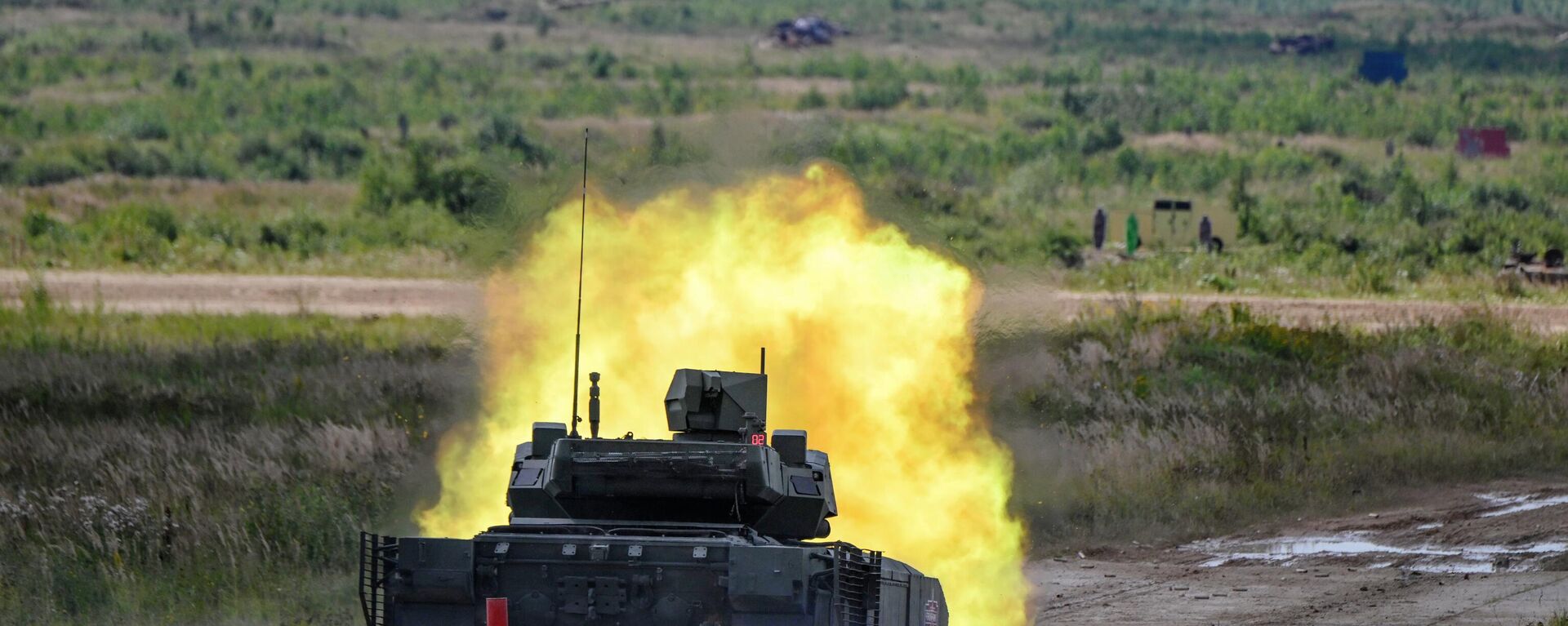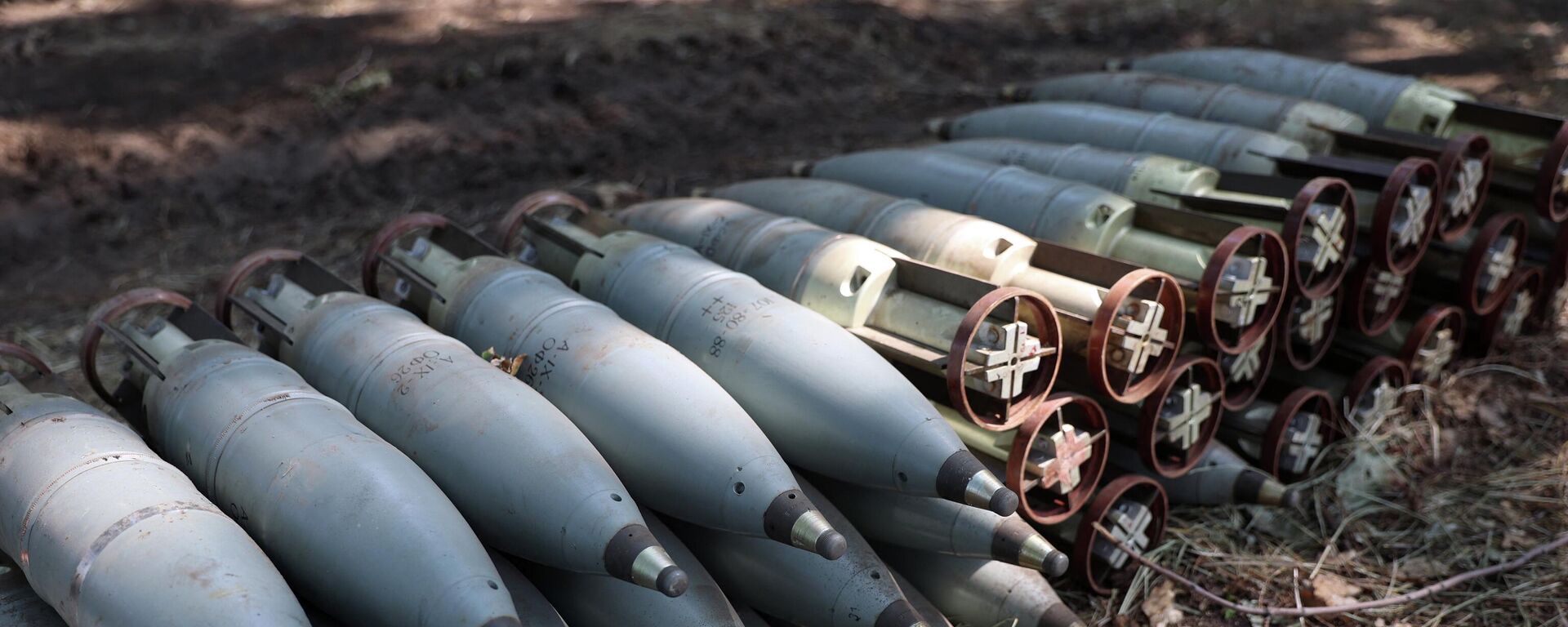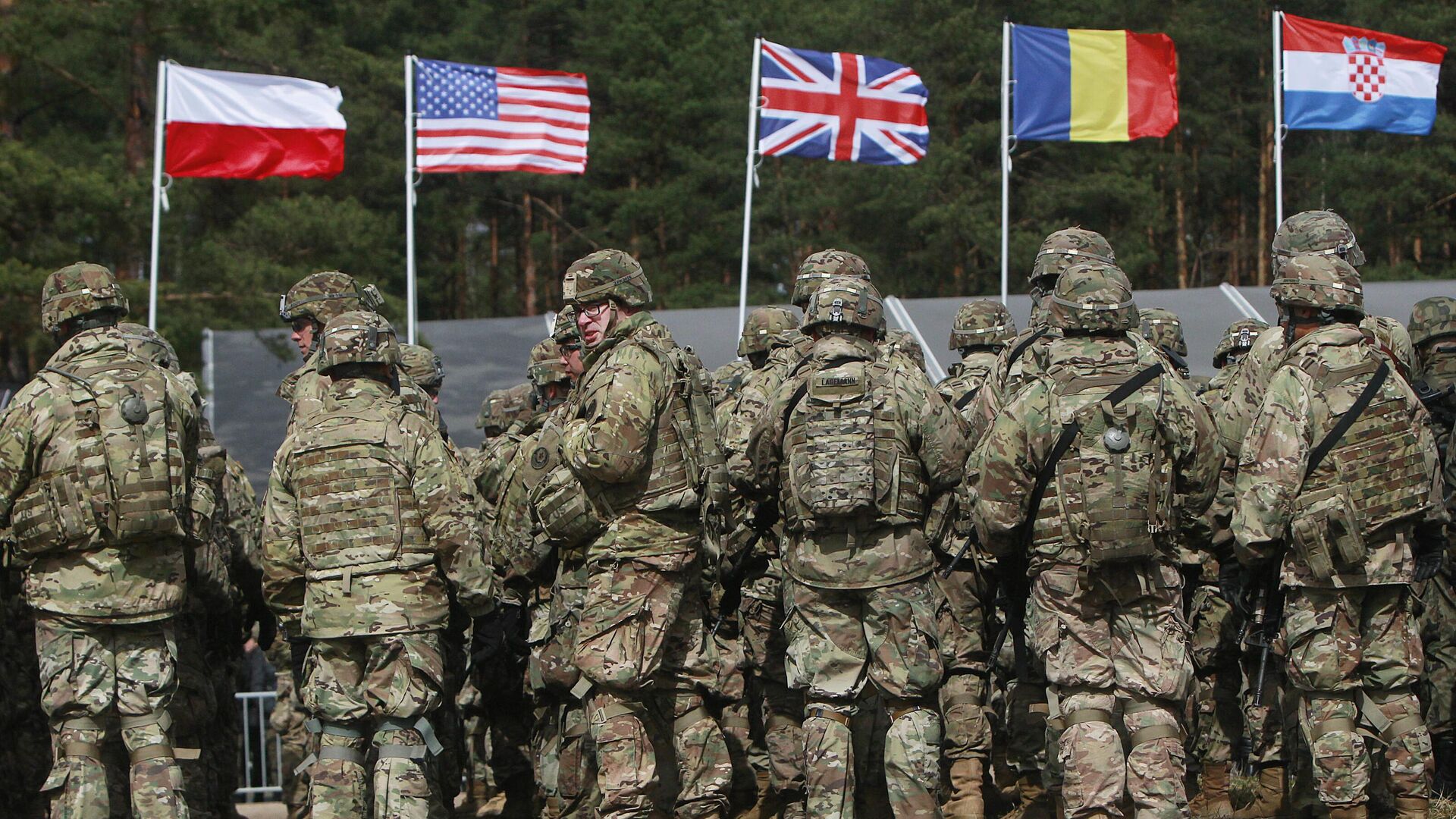https://sputnikglobe.com/20240319/western-armies-unprepared-for-prolonged-conflict-like-in-ukraine-ex-us-army-officer-admits-1117431341.html
Western Armies Unprepared for Prolonged Conflict Like in Ukraine, Ex-US Army Officer Admits
Western Armies Unprepared for Prolonged Conflict Like in Ukraine, Ex-US Army Officer Admits
Sputnik International
A former US Army officer has predicted that future wars between great powers will be like the Ukrainian conflict — and Western armies are unprepared for protracted attritional warfare.
2024-03-19T19:14+0000
2024-03-19T19:14+0000
2024-03-19T19:14+0000
military
military & intelligence
dmytro kuleba
ukraine
russia
kiev
us army
nato
european union (eu)
https://cdn1.img.sputnikglobe.com/img/07e8/02/1a/1117001495_0:0:3208:1805_1920x0_80_0_0_dd617735d08e0cdd22f9f15f94009d75.jpg
A former US Army officer has predicted that future wars between great powers will be like the Ukrainian conflict — and Western armies are unprepared for protracted attritional warfare."In attritional wars, military operations are shaped by a state's ability to replace losses and generate new formations, not tactical and operational maneuvers," writes Alex Vershinin, retired US Army lieutenant colonel, in a Royal United Services Institute article, "The Attritional Art of War: Lessons from the Russian War on Ukraine," published on Monday.Unlike maneuver warfare, which requires swift and violent obliteration of an adversary, the military expert argued that a war of attrition lasts years. The army that concentrates its strategy on destroying enemy forces rather than making territorial gains could emerge the victor.Vershinin highlighted that Western militaries had long avoided attritional wars, favoring shorter, maneuver-oriented engagements. He asserted that victory depends on an army’s ability to replenish losses while fighting and the importance of formidable firepower.While Ukraine relies on arms and ammunition shipments from its Western allies, its artillery high burn rate has necessitated more investment in munitions production.“So compared to the defense budget from just five years ago, we're putting nearly 50 percent more money into munitions," US Defense Secretary Lloyd Austin remarked last year at the Ronald Reagan National Defense Forum in California. Vershinin stated that the Ukrainian conflict has pressed the US military to assess its actual ammunition needs in the event of a future conflict.As NATO and their allies scramble to source arms, ammo, and other military equipment, Russia has overseen a monumental ramping up of industrial output capacity of up to 250,000 artillery munitions monthly or roughly 3 million annually. This outstrips the US and Europe’s combined capacity of about 1.2 million munitions yearly, a top European intelligence source told the press.There is a deepening rift within the European Union (EU) regarding where to find funds to maintain support of the regime in Kiev. Germany, Italy, Spain, and other countries are gripped by donor fatigue, depleted weapon stocks and defense capabilities.Ukrainian Foreign Minister Dmytro Kuleba said his country's armed forces needed 2.5 million artillery shells in 2024, but the EU was able to send only 400,000. "Wars of attrition are won by economies enabling mass mobilization of militaries via their industrial sectors...Armies expand rapidly during such a conflict, requiring massive quantities of armored vehicles, drones, electronic products, and other combat equipment," Vershinin wrote.The Ukrainian conflict has shown Russia’s capacity to replace military equipment, munitions, and personnel lost in combat. Kiev regime, in turn, scrambles to reinforce its dwindling numbers of troops by press-ganging citizens in the street.
https://sputnikglobe.com/20230930/russia-refilling-ammunition-stocks-faster-than-expected---canadian-general-1113820016.html
https://sputnikglobe.com/20230915/us-to-produce-100000-155mm-artillery-shells-each-month-by-2025-1113404650.html
ukraine
russia
kiev
Sputnik International
feedback@sputniknews.com
+74956456601
MIA „Rossiya Segodnya“
2024
Chimauchem Nwosu
https://cdn1.img.sputnikglobe.com/img/07e7/09/01/1113046371_0:99:1536:1635_100x100_80_0_0_9c5c627283eca931c39fe4852bbb301c.jpg
Chimauchem Nwosu
https://cdn1.img.sputnikglobe.com/img/07e7/09/01/1113046371_0:99:1536:1635_100x100_80_0_0_9c5c627283eca931c39fe4852bbb301c.jpg
News
en_EN
Sputnik International
feedback@sputniknews.com
+74956456601
MIA „Rossiya Segodnya“
Sputnik International
feedback@sputniknews.com
+74956456601
MIA „Rossiya Segodnya“
Chimauchem Nwosu
https://cdn1.img.sputnikglobe.com/img/07e7/09/01/1113046371_0:99:1536:1635_100x100_80_0_0_9c5c627283eca931c39fe4852bbb301c.jpg
attritional warfare, western armies unprepared, ukrainian conflict, military strategy, ammunition assessment, munition production, nato scramble, industrial sector role, defense fund allocation, personnel challenges, future conflict scenarios.
attritional warfare, western armies unprepared, ukrainian conflict, military strategy, ammunition assessment, munition production, nato scramble, industrial sector role, defense fund allocation, personnel challenges, future conflict scenarios.
Western Armies Unprepared for Prolonged Conflict Like in Ukraine, Ex-US Army Officer Admits
Western armies have traditionally shied away from attritional wars, preferring shorter, maneuver-based missions. However, potential future conflicts between major world powers could involve slower progress, requiring significant resources in terms of strategy, military equipment, and personnel.
A former US Army officer has predicted that future wars between great powers will be like the Ukrainian conflict — and Western armies are unprepared for protracted attritional warfare.
"In attritional wars, military operations are shaped by a state's ability to replace losses and generate new formations, not tactical and operational maneuvers," writes Alex Vershinin, retired US Army lieutenant colonel, in a Royal United Services Institute article, "The Attritional Art of War: Lessons from the Russian War on Ukraine," published on Monday.
Unlike maneuver warfare, which requires swift and violent obliteration of an adversary, the military expert argued that a war of attrition lasts years. The army that concentrates its strategy on destroying enemy forces rather than making territorial gains could emerge the victor.
Vershinin highlighted that Western militaries had long avoided attritional wars, favoring shorter, maneuver-oriented engagements. He asserted that victory depends on an army’s ability to replenish losses while fighting and the importance of formidable firepower.
While Ukraine relies on arms and ammunition shipments from its Western allies, its artillery high burn rate has necessitated more investment in munitions production.
“So compared to the defense budget from just five years ago, we're putting nearly 50 percent more money into munitions," US Defense Secretary Lloyd Austin remarked last year at the Ronald Reagan National Defense Forum in California.
Vershinin stated that the Ukrainian conflict has pressed the US military to assess its actual ammunition needs in the event of a future conflict.

30 September 2023, 09:59 GMT
As NATO and their allies scramble to source arms, ammo, and other military equipment, Russia has overseen a monumental ramping up of
industrial output capacity of up to 250,000 artillery munitions monthly or roughly 3 million annually. This outstrips the US and Europe’s combined capacity of about 1.2 million munitions yearly, a top European intelligence source told the press.
There is a deepening rift within the
European Union (EU) regarding where to find funds to maintain support of the regime in Kiev. Germany, Italy, Spain, and other countries are gripped by donor fatigue, depleted weapon stocks and defense capabilities.
Ukrainian Foreign Minister Dmytro Kuleba said his country's armed forces needed 2.5 million artillery shells in 2024, but the EU was able to send only 400,000.
"Wars of attrition are won by economies enabling mass mobilization of militaries via their industrial sectors...Armies expand rapidly during such a conflict, requiring massive quantities of armored vehicles, drones, electronic products, and other combat equipment," Vershinin wrote.

15 September 2023, 17:54 GMT
The Ukrainian conflict has shown Russia’s capacity to replace military equipment, munitions, and personnel lost in combat. Kiev regime, in turn, scrambles to reinforce its dwindling numbers of troops by press-ganging citizens in the street.





